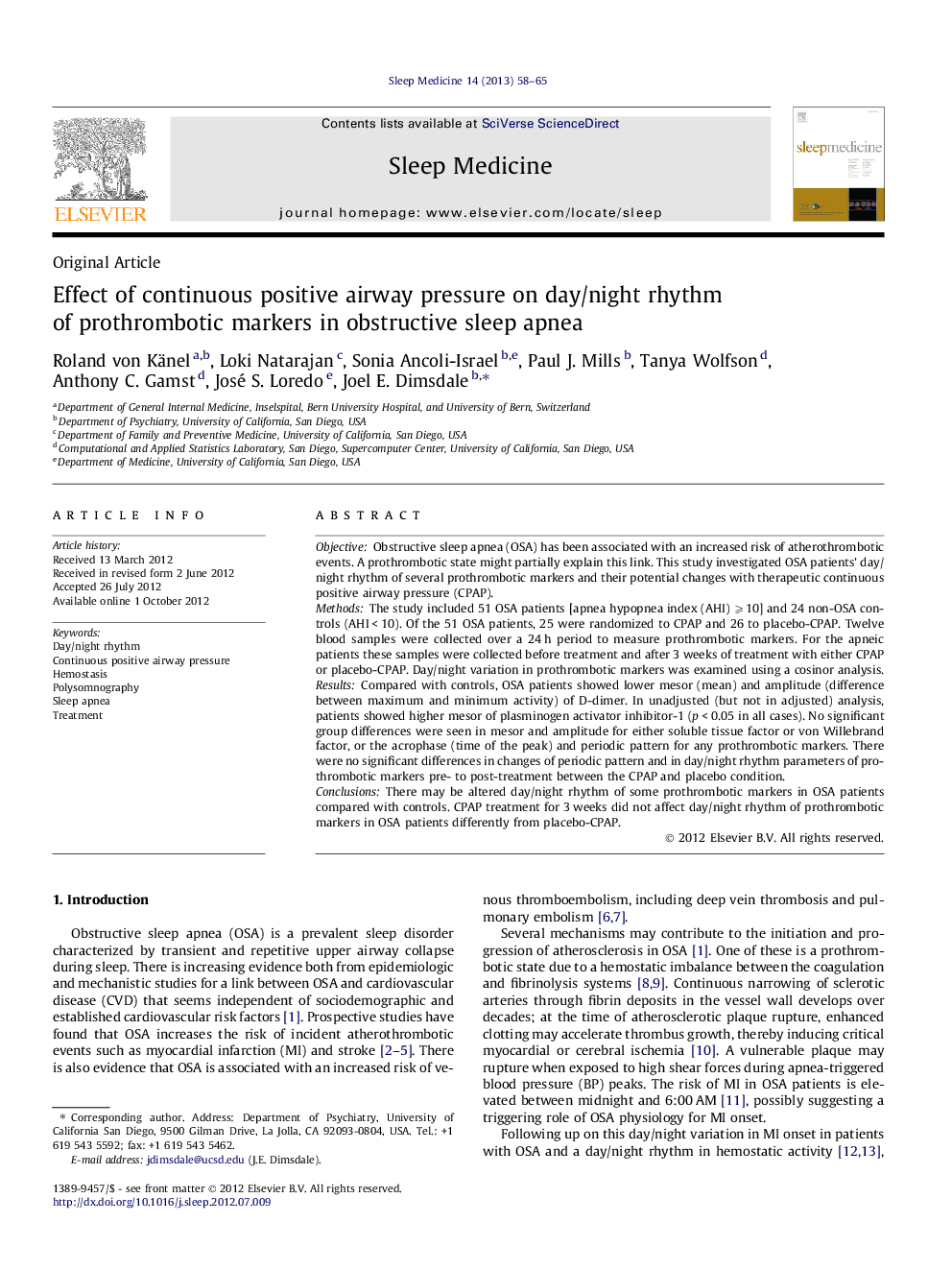| Article ID | Journal | Published Year | Pages | File Type |
|---|---|---|---|---|
| 3176170 | Sleep Medicine | 2013 | 8 Pages |
ObjectiveObstructive sleep apnea (OSA) has been associated with an increased risk of atherothrombotic events. A prothrombotic state might partially explain this link. This study investigated OSA patients’ day/night rhythm of several prothrombotic markers and their potential changes with therapeutic continuous positive airway pressure (CPAP).MethodsThe study included 51 OSA patients [apnea hypopnea index (AHI) ⩾10] and 24 non-OSA controls (AHI < 10). Of the 51 OSA patients, 25 were randomized to CPAP and 26 to placebo-CPAP. Twelve blood samples were collected over a 24 h period to measure prothrombotic markers. For the apneic patients these samples were collected before treatment and after 3 weeks of treatment with either CPAP or placebo-CPAP. Day/night variation in prothrombotic markers was examined using a cosinor analysis.ResultsCompared with controls, OSA patients showed lower mesor (mean) and amplitude (difference between maximum and minimum activity) of D-dimer. In unadjusted (but not in adjusted) analysis, patients showed higher mesor of plasminogen activator inhibitor-1 (p < 0.05 in all cases). No significant group differences were seen in mesor and amplitude for either soluble tissue factor or von Willebrand factor, or the acrophase (time of the peak) and periodic pattern for any prothrombotic markers. There were no significant differences in changes of periodic pattern and in day/night rhythm parameters of prothrombotic markers pre- to post-treatment between the CPAP and placebo condition.ConclusionsThere may be altered day/night rhythm of some prothrombotic markers in OSA patients compared with controls. CPAP treatment for 3 weeks did not affect day/night rhythm of prothrombotic markers in OSA patients differently from placebo-CPAP.
